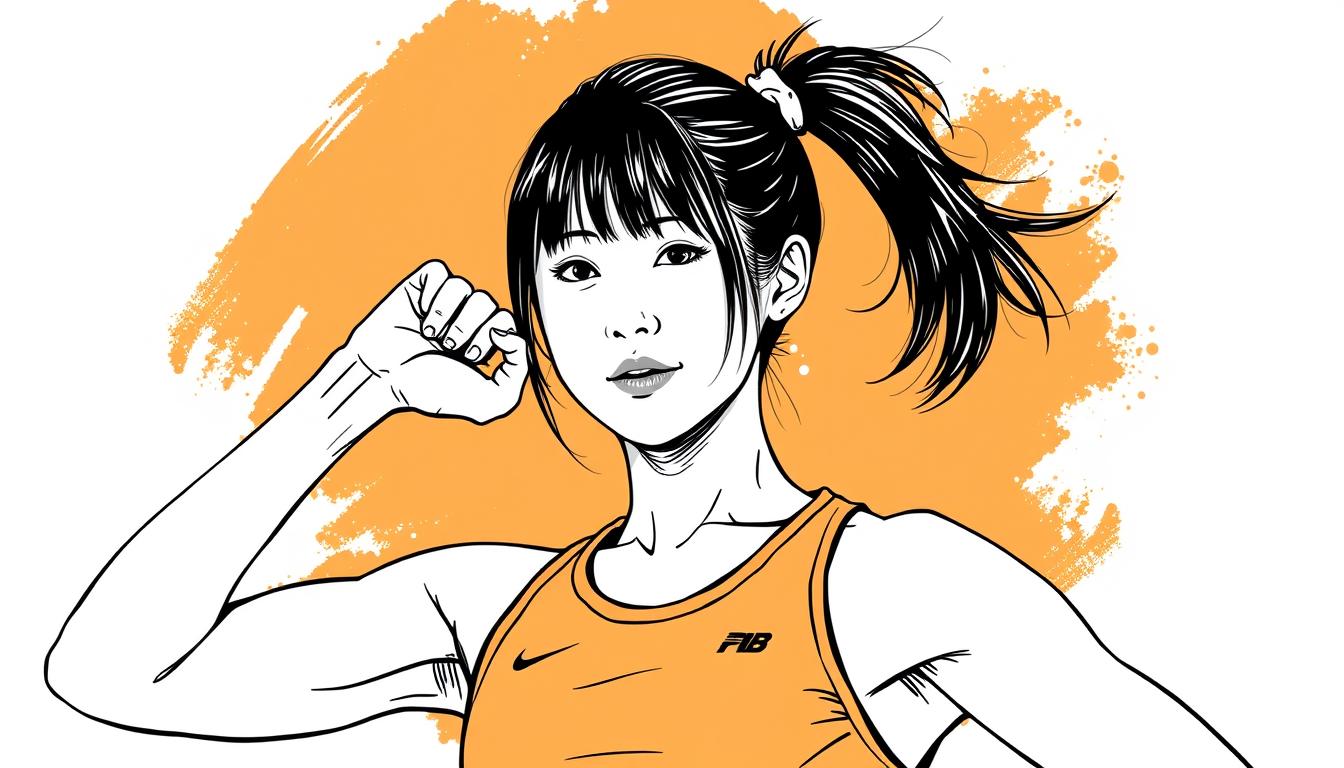The javelin star arrived in Tokyo carrying a nation’s hope. As the reigning world and Olympic champion, she was Japan’s biggest name in athletics. All eyes were on the National Stadium.
Her journey to this moment reshaped history. This athlete became the first Japanese woman to win world championship gold in a throwing event. She then captured Olympic gold in Paris, securing Japan’s sole athletics title.
Her rise from a breakthrough bronze medalist to a double champion made her a cultural icon. She proved Japanese women could dominate in field events. These events were traditionally ruled by European and American competitors.
Based in the Czech Republic for training, she brought international expertise to her craft. She combined technical skill with the mental strength needed for immense pressure. The buildup to the Tokyo world championships positioned her as the centerpiece of Japan’s medal hopes.
Yet beneath the celebration, warning signs emerged. An inflammation in her right elbow just months prior threatened to reshape the story. The narrative of destiny now faced a stark challenge.
Recent Shocks at the World Athletics Championships
Friday’s qualifying round at the World Athletics Championships delivered a result few could have predicted. The women’s javelin event, anticipated as a coronation for the local hero, instead became the scene of a major upset.
Unexpected Qualifying Round Exit
Her first throw of 60.31 meters immediately signaled trouble. It landed more than four meters short of her season’s best. The second attempt showed a marginal improvement to 60.38 meters.
The final throw of 58.80 meters sealed the outcome. It confirmed the champion would not advance to the final. Thirty-six athletes competed for just twelve spots.
Kitaguchi finished in 14th place overall. This left her just outside the cutoff by a painfully narrow margin. Colombia’s Valentina Barrios took the last final spot with a throw of 60.98 meters.
Emotional Moments at Tokyo National Stadium
Throughout the attempts, the athlete maintained her composure. She smiled and waved, trying to energize the passionate crowd. The spectators cheered with zealous intensity, hoping to will their star forward.
When elimination became certain, the scene shifted. She was later seen sitting alone, processing the sudden end to her title defense. The moment captured the brutal reality of elite sport.
Fellow Japanese competitors Momone Ueda and Sae Takemoto also failed to advance. This marked the first time in years without a Japanese athlete in the women’s javelin final.
Analyzing the Impact on Japanese Sports
The qualifying round’s outcome sent ripples far beyond the track. It touched the core of Japanese sports culture. The event became major sports news nationwide.
This moment highlighted the tension between celebrating athletes and the immense pressure of home expectations. The athlete’s early exit prompted reflection on Japan’s standing in global field events.
Crowd Reactions and National Pride
A capacity crowd filled the National Stadium. Their hope was almost a physical presence. Every throw was met with thunderous support.
When the result became final, a visible wave of disappointment swept through the stands. Fans had traveled for a historic performance on home soil. The emotional investment was deeply personal.
Kitaguchi acknowledged this connection. “I was so happy with this crowd in the stadium but I could not throw well today,” she told reporters. “I feel very sorry.” Her maturity shone through as she added that the support would be “great memories,” valuing the experience beyond the result.
Insights from Global Athletic Performances
The world championships demonstrated the intense competitiveness of the women’s javelin. Athletes from Serbia and Colombia secured their final spots by incredibly narrow margins.
The race for medals is fiercer than ever. More nations are producing elite throwers capable of winning on any given day.
| Athlete | Nationality | Best Qualifying Throw (m) | Result |
|---|---|---|---|
| Valentina Barrios | Colombia | 60.98 | Qualified (12th) |
| Adriana Vilagoš | Serbia | 61.92 | Qualified |
| Haruka Kitaguchi | Japan | 60.38 | Did Not Qualify (14th) |
| Momone Ueda | Japan | 58.74 | Did Not Qualify |
The table shows how small the difference was between success and elimination. It underscores the high level of this world event.
Haruka Kitaguchi: Battling Injury and High Expectations
The medical diagnosis revealed the true obstacle facing the defending champion. Medial epicondylitis, known as golfer’s elbow, caused persistent pain exactly where javelin throwers generate power.
Struggles with Elbow Injury
Inflammation developed in June during peak training time. This forced difficult decisions about competition readiness.
She skipped the national championships in July to prioritize healing. The Diamond League final in Zurich showed the injury’s severe impact. Her throwing mechanics suffered from the elbow condition.
Slight improvement followed but questions remained. Could she regain top form in time for the world championships?
Plans for a Comeback and Future Gold
At a July news conference, the athlete projected confidence. “I’ll try to return to action in late August,” she stated.
Her competitive fire remained strong despite the setback. “I know better than anyone the joy of finishing first. I’ll prepare well to win gold.”
The gap between her confident words and the September result showed how injuries can challenge even determined champions.
| Time Period | Event | Elbow Condition | Competition Impact |
|---|---|---|---|
| June 2023 | Initial Inflammation | Pain developing | Training adjustments needed |
| Early July 2023 | National Championships | Active healing phase | Event skipped for recovery |
| Late August 2023 | Planned Return | Targeted recovery | Limited competition experience |
| September 2023 | World Championships | Ongoing management | Performance below peak level |
High expectations created additional pressure during this challenging time. The champion’s future comeback now represents resilience rather than decline.
Inside the Tokyo National Stadium Experience
The iconic venue that hosted Olympic glory now faced a different challenge: managing Tokyo’s intense late-summer heat. September temperatures created complex conditions for both competitors and spectators.
Atmosphere and Venue Adjustments
Tokyo National Stadium crackled with anticipation during the qualifying round. Japanese fans filled the stands, creating an electric environment.
Organizers implemented several physical adjustments. Additional hydration stations appeared throughout the venue. Cooling areas provided relief from the oppressive conditions.
The stadium carried emotional weight for many athletes. It represented both past triumphs and current pressures.
Weather Concerns and Early Start Times
Forecasts predicted continued heat throughout the championship period. This raised serious safety concerns for endurance events.
Officials moved race walking and marathon start times to 7:30 a.m. The early schedule aimed to avoid peak heat exposure.
The women’s javelin final received a 9:05 p.m. start time. Evening competition offered cooler, more favorable conditions.
These scheduling changes prioritized athlete health. They demonstrated thoughtful event management despite challenging circumstances.
Comparing Career Triumphs with Current Challenges
The distance between past glory and present struggle was measured in meters at the Tokyo National Stadium. Her best throw of 60.38 meters fell far short of the powerful launches that defined her career. This performance stood in stark contrast to the throws that made her a champion.
Past World and Olympic Titles
Her history is one of breaking barriers. She first made her mark by winning bronze at the 2022 World Athletics Championships. This made her the first Japanese woman to medal in a senior throwing event.
The following year, she claimed the world title in Budapest with a throw of 66.73 meters. She then secured the ultimate prize: Olympic gold in Paris. That victory earned Japan its sole athletics title at the 2024 Games.
Each final was a showcase of her ability to deliver under pressure. Her season-best of 64.63 meters this year showed she still had the capability. But in Tokyo, that potential remained unrealized.
Learning from Previous Championships
Past successes taught her how to perform when a medal was on the line. She knew the joy of finishing first better than anyone. Those experiences built a champion’s mindset.
The Tokyo result adds a new chapter of vulnerability. Analyzing this setback will be crucial. Understanding how injury recovery and home pressure impacted her execution is key.
Despite this challenge, her legacy as a pioneer in women’s javelin is secure. Her career remains defined by historic achievements, not a single disappointment. The native athlete’s story is still one of remarkable ascent.
Looking Ahead: The Future of Japanese Athletics
The story of Japanese athletics continues beyond any single competition. Emerging talents are ready to write new chapters at future world athletics events.
Hurdler Rachid Muratake represents Japan’s strongest medal hope. His national record of 12.92 seconds ranks second globally this season. The men’s 4×100 relay team also shows serious promise with teenage phenomenon Sorato Shimizu joining established stars.
These championships provided valuable lessons about managing home pressure and injury recovery. The experience will shape Japan’s approach to upcoming world athletics championships and Olympic Games. The nation’s athletic future appears bright across multiple disciplines.




